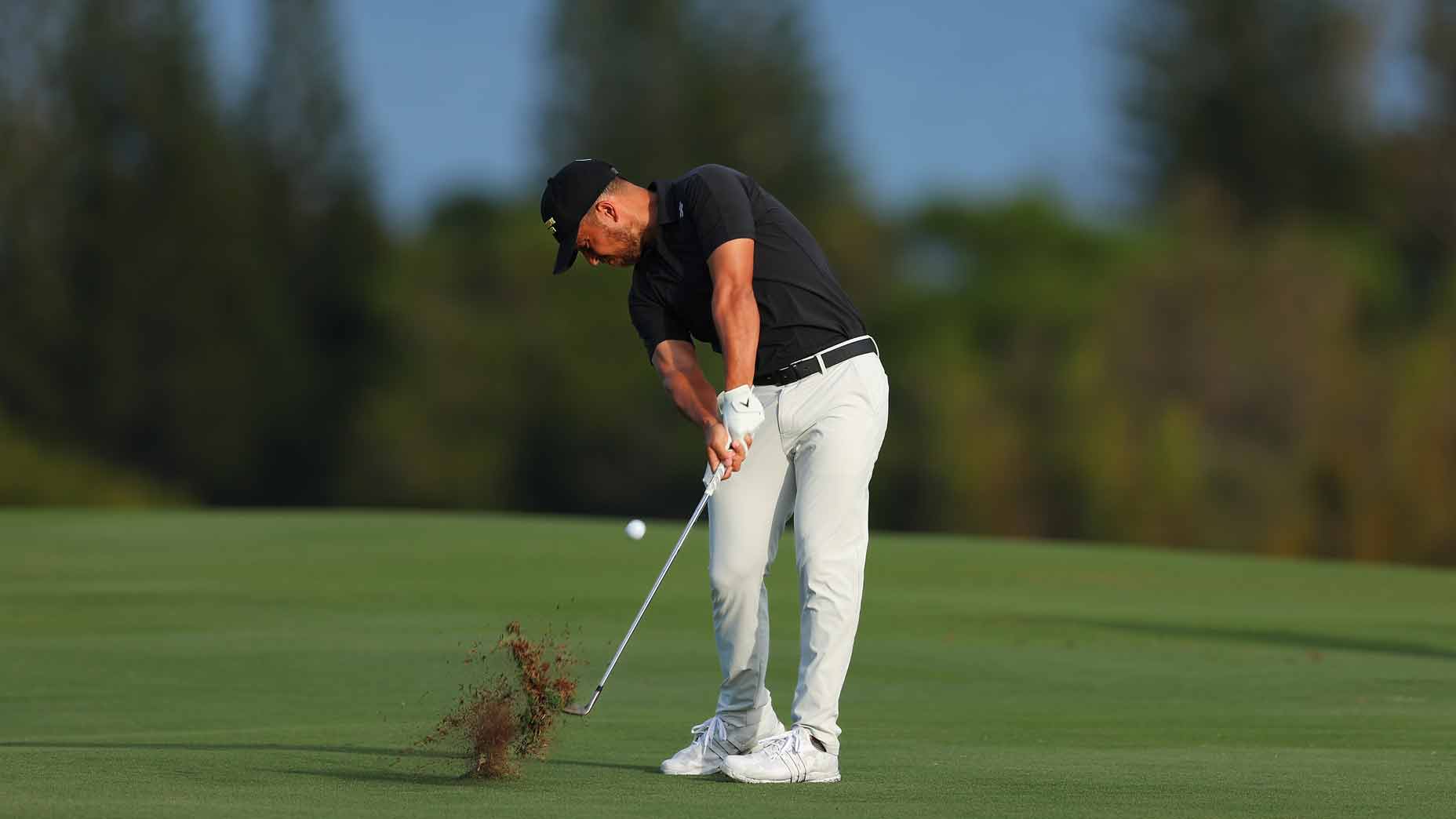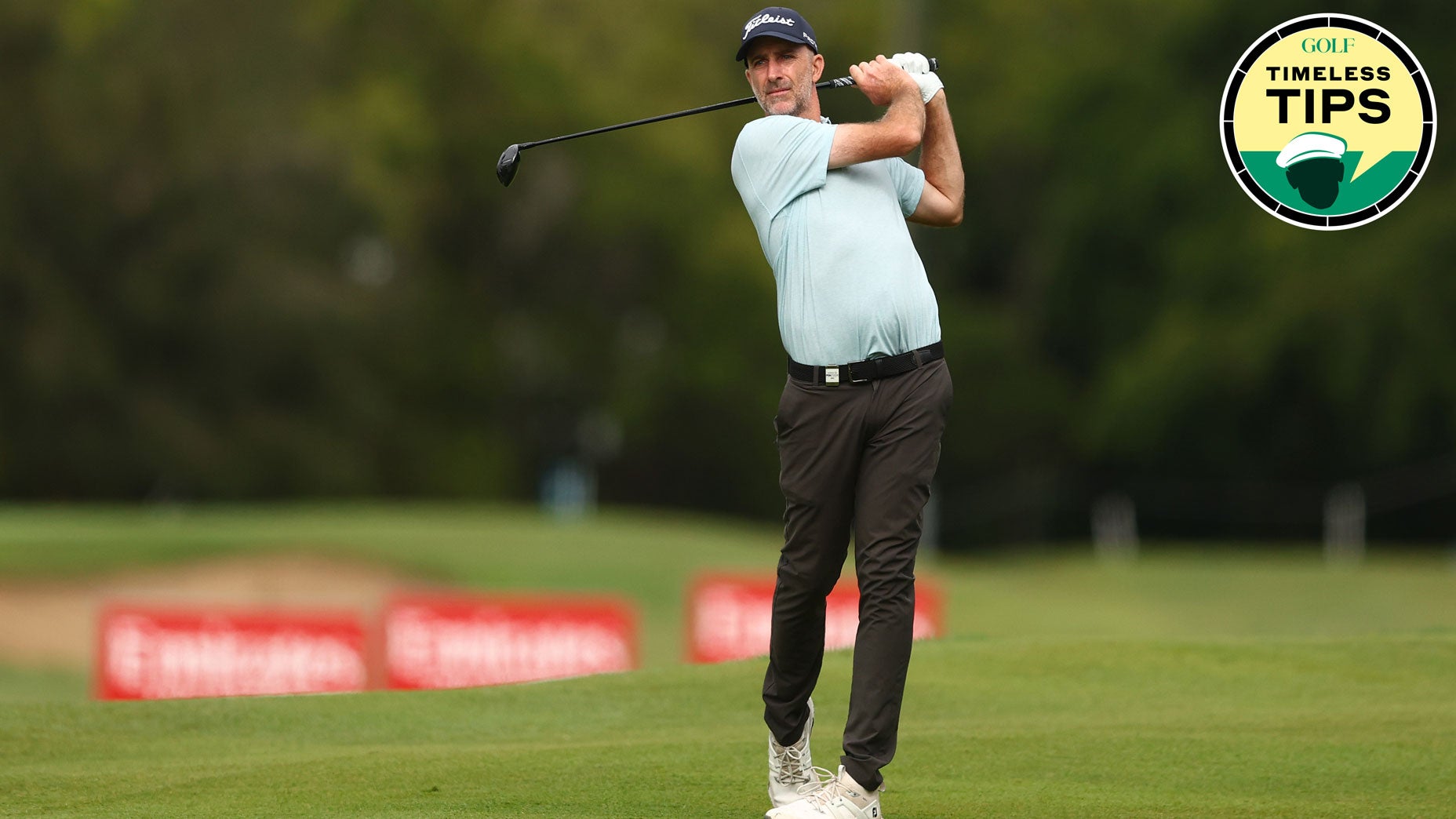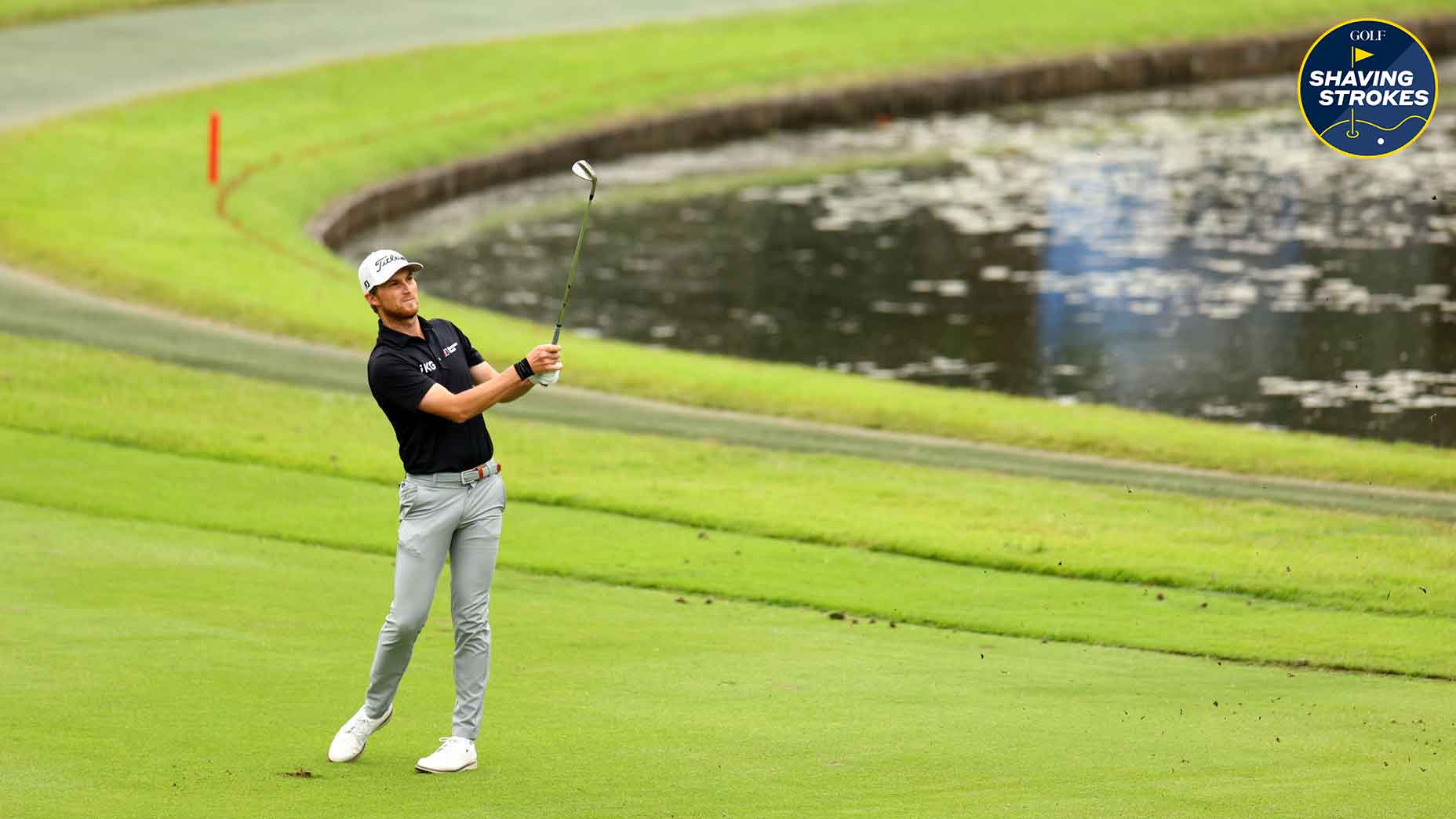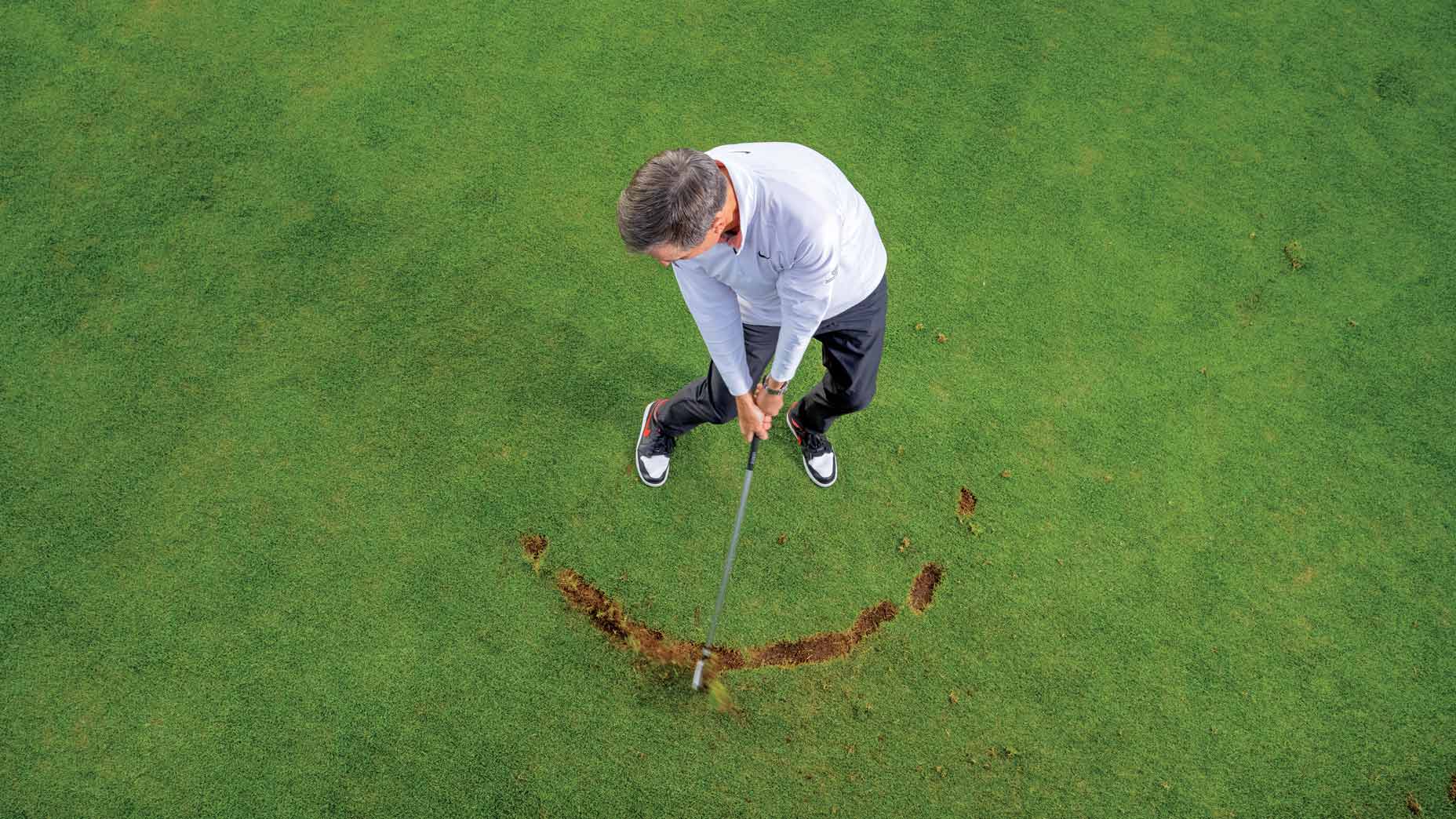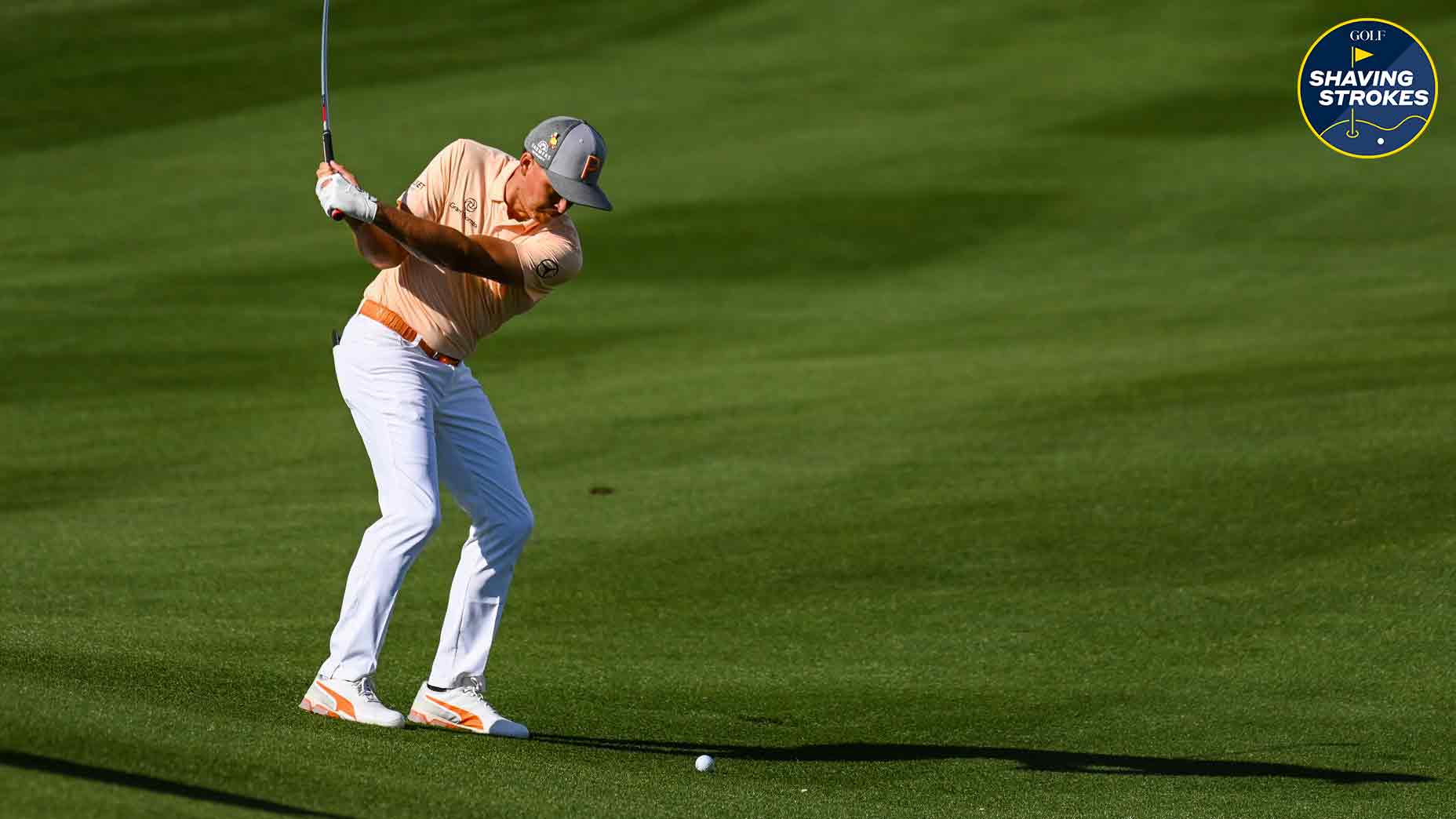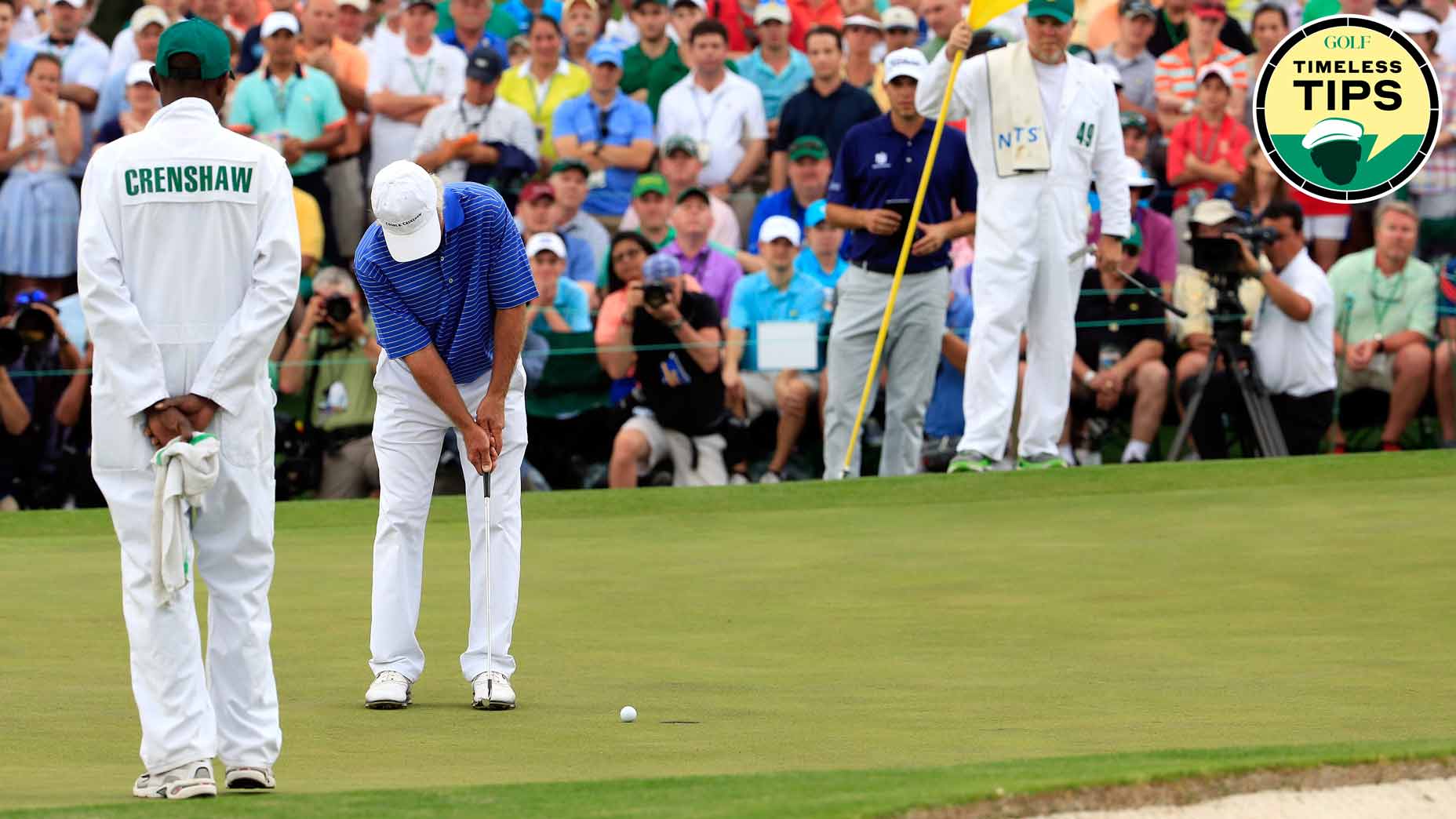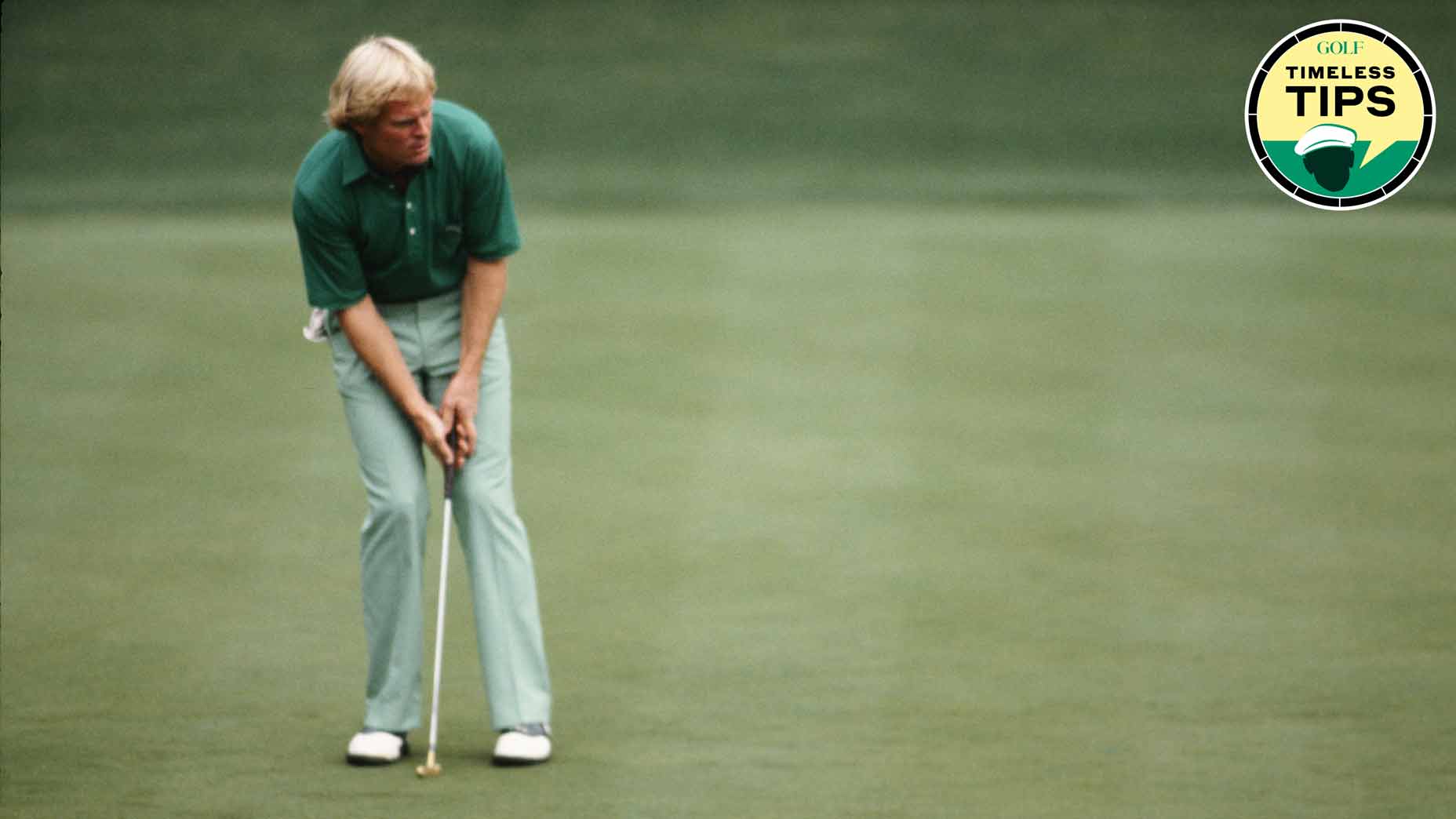4 easy ways to hit more greens, according to a major champion
- Share on Facebook
- Share on Twitter
- Share by Email

Jim Furyk is one of the best iron players of his generation.
Getty Images
Golf instruction is ever-evolving, but the best advice stands the test of time. In GOLF.com’s new series, Timeless Tips, we’re highlighting some of the greatest advice teachers and players have dispensed in the pages of GOLF Magazine. Today we have four tips for becoming a better ball striker from our October 2007 issue. For unlimited access to the full GOLF Magazine digital archive, join InsideGOLF today; you’ll enjoy $140 of value for only $39.99/year.
Hitting greens in regulation is absolutely crucial if you want to consistently shoot low scores. When you can give yourself looks at birdies on the greens, it takes tons of stress off the rest of your game. And the only way to do that is by hitting greens in regulation.
On the PGA Tour, the average pro hits right around 66 percent of greens in reg. That means that on two out of every three holes, they’re giving themselves two putts for par. It makes the game a heck of a lot easier when you can play golf that way.
Weekend warriors will never hit greens at that high a clip, but there’s no doubt you can increase your average. In the excerpt from the October 2007 issue of GOLF Magazine below, Jim Furyk gives four easy tips for hitting more greens than ever before. Read on to check it out.
4 tips for hitting more greens
As late as 1994, my first full season on Tour, hitting greens meant owning a mean mid- and long-iron game. For the big bombers out there today it means driving the ball as far as you can — even if it finds the rough — and gouging it onto the green with a short iron or wedge. That works for guys like Tiger Woods and Vijay Singh, but not for me. I’m only 20 yards longer off the tee than I was in ’94, so most of my approach shots are still with mid- and sometimes long irons.
I know very few amateurs who can drive the ball 320 yards like Tiger and Vijay, and if they doit usually lands where they can’t find it. If you want to hit more greens — and make more birdies — pattern your game after mine, which favors accuracy over distance. As you can see from my stats below, you’ll always have the best chance of hitting a green in regulation when you’re in the short grass, even if it requires a longer approach. Here’s how you can make sure your drives stay out of the rough just like mine and then make the best swing possible to knock down the pin anywhere from 75 to 200+ yards.
1. Swing your driver like an iron
I know I hit my driver 280 yards, but I bet you don’t know exactly how far you hit yours. On the other hand, you’d answer in a heartbeat if] asked how far you hit your 7-iron. The reason why is that you usually hit your 7-iron to a specific distance (for me, that’s 165 yards) while you hit your driver as far as you can and hope it stays in the fairway. Compared to your 7-iron swing your driving motion is too quick, too long and completely out of whack.
Here’s how to fix that and swing your driver as smoothly as you swing your 7-iron: Hit 20 drives at the range and note how far each one flies. Calculate the average — this gives you a solid driver-distance gauge. On the course, locate a spot in the fairway at that yardage and try to hit that distance, just like you would if you were hitting your 7-iron into the green. Driving to a specific distance — instead of driving for distance — keeps your swing in check and helps you stay in better balance. It’s one of the reasons you hit your 7-iron better than your driver.
2. Choose the right club
The *real* reason you’re bad at ball striking (and how to fix it!)By: Zephyr Melton
Just because a sprinkler head gives you a yardage doesn’t mean that’s the distance you should carry the ball. If] have 150 yards to a pin, for example, and I’m playing in the U.S. Open where the greens are typically hard and fast, I’ll drop from an 8-iron to a 9-iron because | know the ball is going to release like crazy. But if I’m playing at Pebble Beach in February I’ll fly my 8-iron all the way knowing that the greens are soft and the ball will hold. If you’re fighting between two short irons, you’ll find the clear-cut answer once you adjust for how the ball will react once it hits the green.
3. Don’t chase perfect
The most important thing about hitting a green from mid-range is hitting the shot that gives you the best mathematical chance of getting on. Let’s say you have 165 yards to the pin — your perfect 7-iron distance. But how often do you hit a perfect 7-iron? Even pros don’t catch it pure every time. Making a three-quarter swing with your 6-iron is much easier.
If you don’t believe me, try this drill: Hit your 7-iron out onto the range and note where the ball lands. Hit four more 7-irons and try to hit to that same spot. Now, grab your 6-iron and do the same thing. If I’ve seen it once I’ve seen it a hundred times — you’ll hit to the marked distance more consistently with the longer club.
There’s no shame in hitting a longer club than what your buddies use from the same distance if you get on the green and they end up plugged in a greenside bunker.
4. Aim smarter
The first thing to do after you’ve left yourself a long approach is to change your notion of success. As a general rule, the farther you are from the flagstick the more you should play toward the fat portion of the green. Even if this leaves you with a lengthy putt, you’re still on and have a shot at birdie and a good chance of making par. Plus, scaling down your expectations takes the pressure off, helping you make a smoother swing.
Almost every Tour pro uses this strategy, although some will try to work the ball closer by hitting a purposeful fade or draw. If you have this kind of shotmaking ability, aim for the fat portion of the green and try to bend the ball left or right toward the pin. If the ball curves like you planned, you’re in business. If not, you’re still safe in the middle of the green.
Latest In Instruction

Zephyr Melton
Golf.com Editor
Zephyr Melton is an assistant editor for GOLF.com where he spends his days blogging, producing and editing. Prior to joining the team at GOLF, he attended the University of Texas followed by stops with the Texas Golf Association, Team USA, the Green Bay Packers and the PGA Tour. He assists on all things instruction and covers amateur and women’s golf. He can be reached at zephyr_melton@golf.com.

